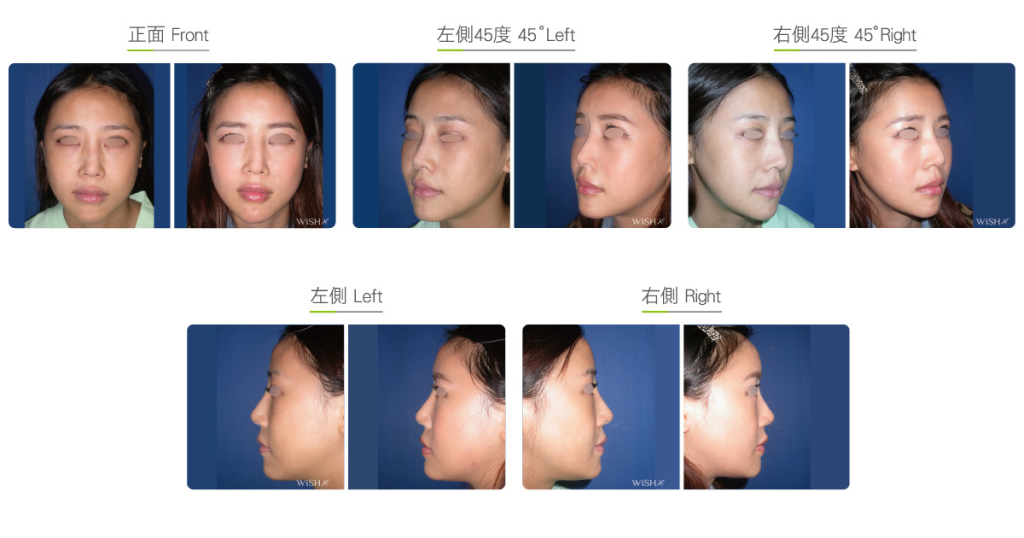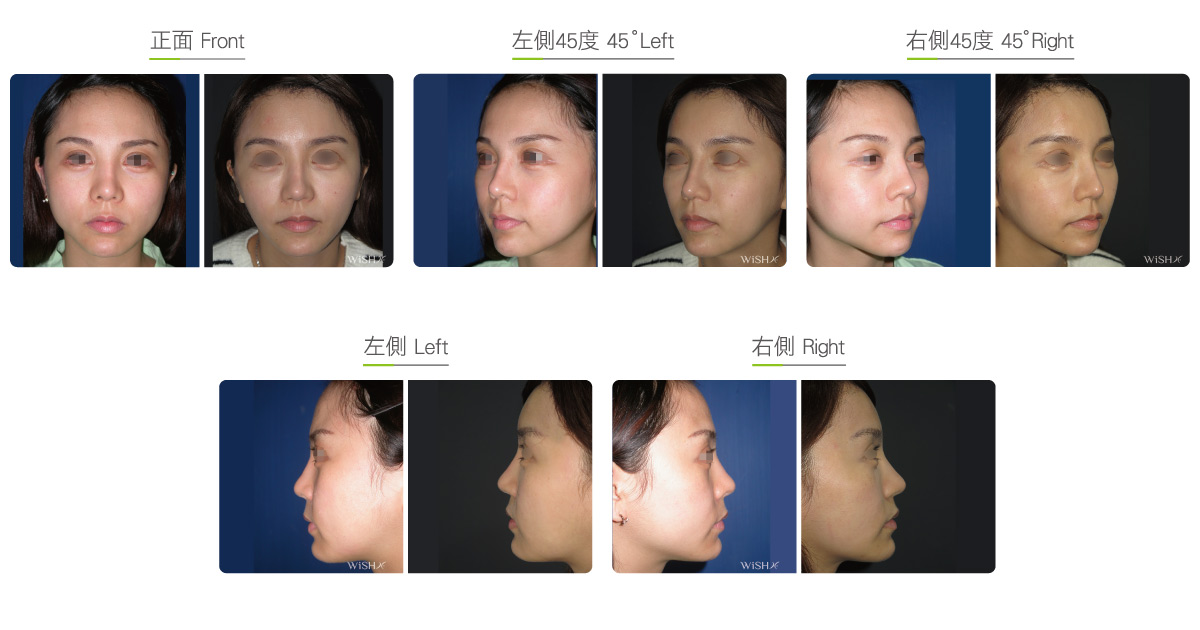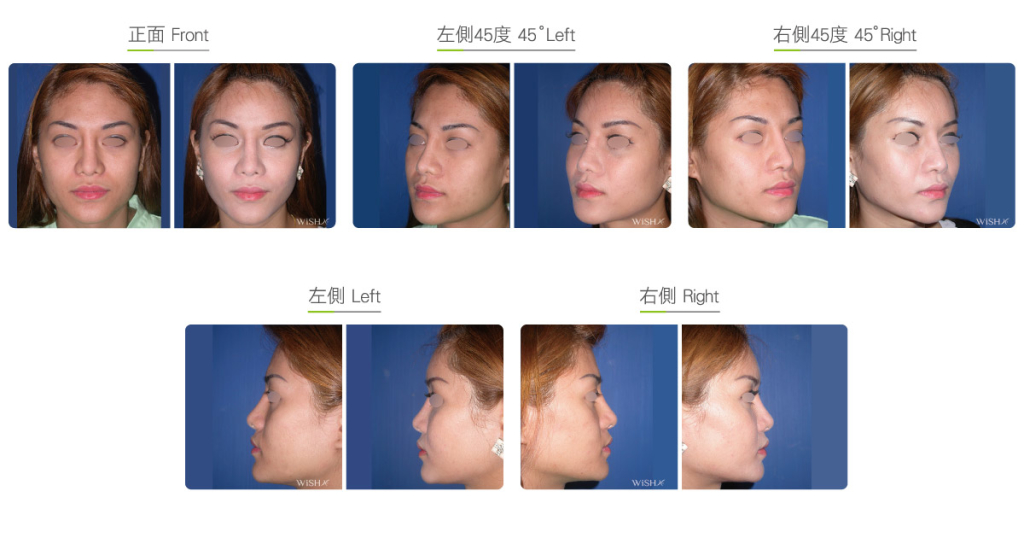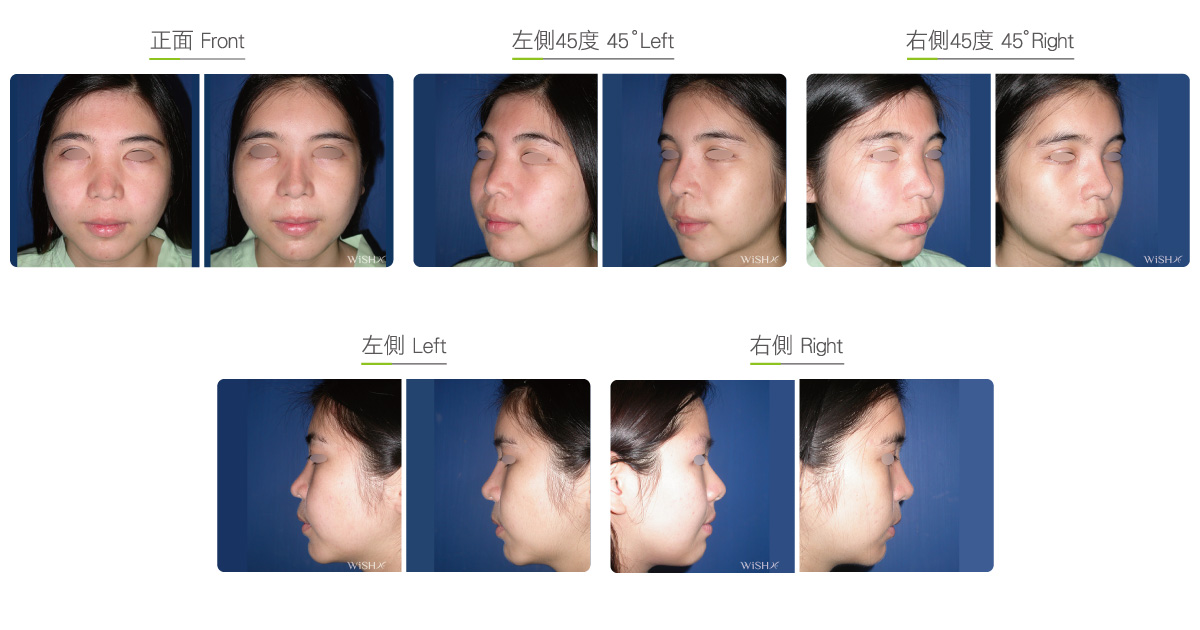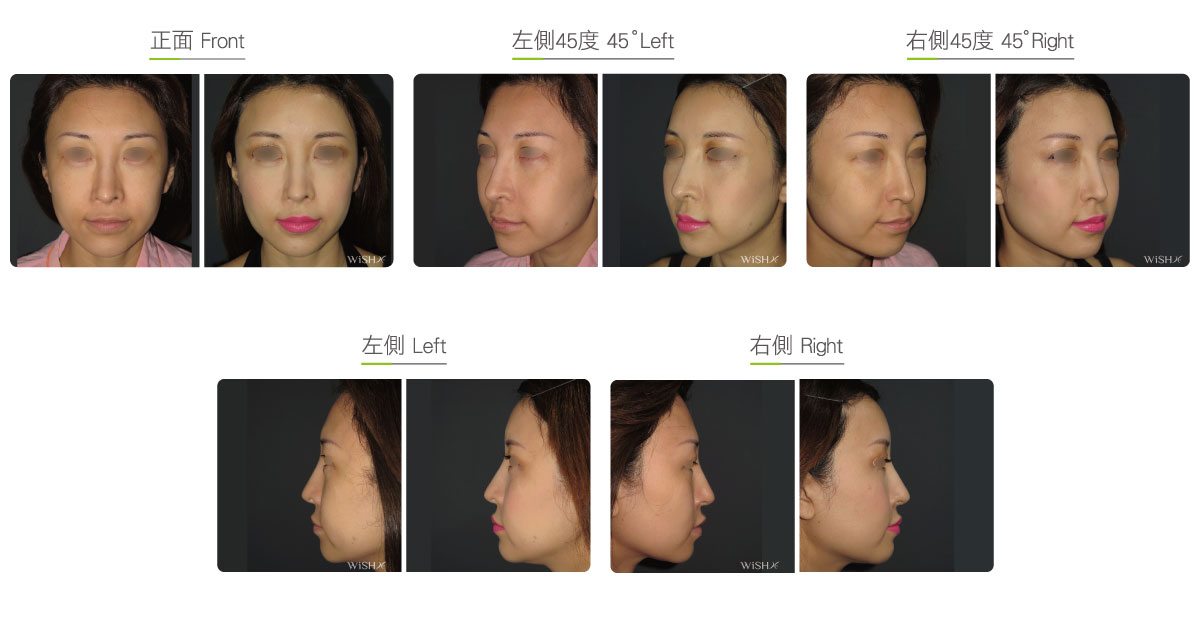Forehead Implant
This is a prosthetic surgery that emplaces an appropriate size of a silicone forehead implant or Gore-Tex flake under the forehead skin to achieve augmentation and compensate forehead bone depression or unevenness. This method is currently acknowledged as the most stable and long-lasting forehead augmentation. It is conducted by creating a 4-cm incision at the scalp behind the hairline superior to the forehead, detaching the forehead skin from the bone via an endoscope (similar to an endoscopic brow lift) to create a proper subcutaneous space, and then emplacing the pruned or finished forehead implant into the sub-periosteal space. When the implant is confirmed to be fully attached to the bone, the scalp incision is stitched. This surgery not only reinforces the forehead arc and curvature but also realizes a regional lift of the loose or mild droopy forehead skin. For patients in need of eyebrow bone augmentation, more Gore-Tex flakes are emplaced via the same incision to enhance the prominence at the superior margin of the eyebrow to fulfill the dual objective of forehead and eyebrow augmentations.
Surgical conditions
Duration
- Type of anesthesia: IV sedation + local anesthesia and regional nerve block
- Type of incision: A 4–5-cm incision within the hairline superior to the scalp
- Recovery: 7–10 days
- Removal of stitches: 10–14 days
General instructions
No food and water on the day of surgery
- Avoid smoking, alcohol, and irritating foods for 1 month postoperatively, and avoid strenuous or excessive activities.
- Avoid hair dying or perming for 2 months postoperatively.
- Avoid heavy massage to or squeezing of the forehead for 3 months postoperatively.
Ideal candidates
- Patients with a congenitally flat or concave forehead
- Those with a narrow forehead due to a low hairline
- Those with a distinct depression between the forehead and eyebrow bone (eyebrow prominence)
- Those with a low hairline and flat forehead and concurrent forehead skin looseness
- Those who subjectively feel that their forehead is not plump enough
Possible complications
- Regional alopecia
- Prosthesis displacement
- Foreign body reaction
- Infection
- Chronic subcutaneous seroma
Surgical advantages
-
Surgical results are stable and persistent.
-
Different sizes and thicknesses of forehead implants are emplaced in accordance with the patient’s requirements, which are highly customizable.
-
The scar is hidden in the scalp and is less likely to be noticed.
-
Concurrent forehead lift or eyebrow augmentation can be performed.
Surgical drawbacks
-
Confined by the shape and size of the prosthesis, forehead implant surgery cannot fill the temple.
-
It necessitates full forehead augmentation and is unable to correct the regional forehead depression.
-
An emplaced silicone forehead implant may have risks of foreign body reaction, infection, or displacement.
-
An emplaced Gore-Tex prosthesis may present a palpable border or uneven border in the junction with the temple.
-
There may be regional alopecia at the scalp incision.
-
The swelling takes a long time to subside (average of 3–4 weeks).

